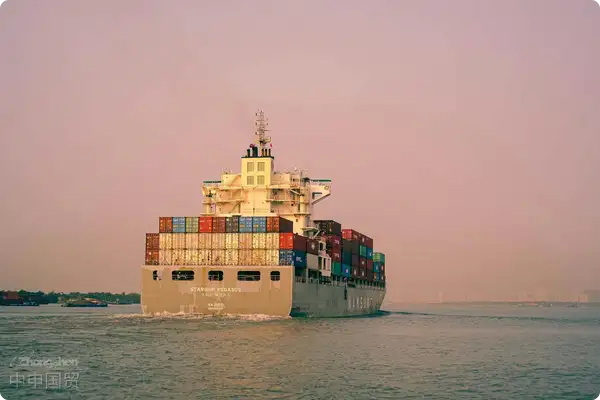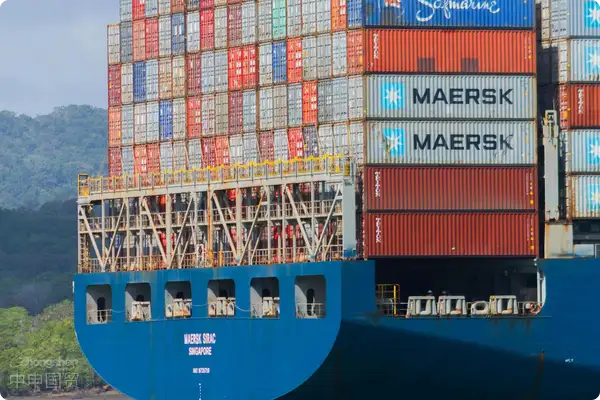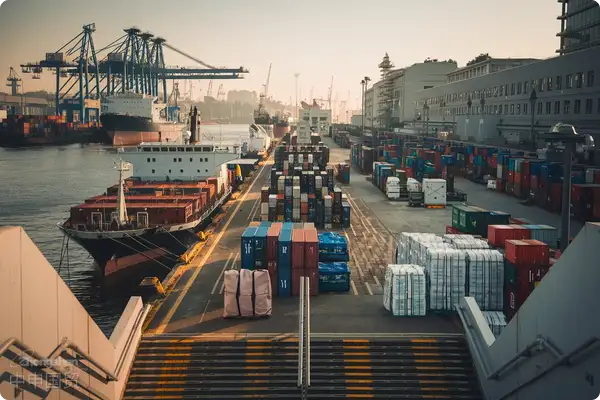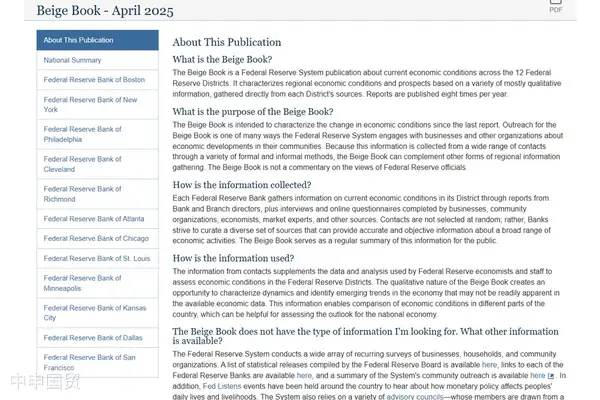How to Efficiently Complete the Import of Mechanical Equipment? A Comprehensive Analysis of Agency Services in 2025
亚洲激情五月之综合婷婷 |
欧美日韩二区三区在线观看 |
国产精品区一区二区国模 |
中文字幕黄色在线免费观看 |
日韩人妻成人福利电影一区二区 |
国产精品一区二区色蜜蜜 |
日本五十路六十路熟妇 |
欧美精品一区二区三区日韩 |
久久精品店一区二区三区
|
精品日韩一区二区三区中文字幕 |
精品少妇极品久久久久久久
|
av色先锋音影一区二区啪啪操
|
久久精品国产亚洲欧美成人 |
黄色影院在线观看一区二区 |
亚洲国产天堂久久综合网 |
视频区 图片区 小说区免费 |
日韩国产亚洲一区二区三区 |
欧美一区二区精品人妻 |
国产欧美韩日一二精品专区 |
夜夜夜夜爽爽爽爽爽爽爽 |
国产理论一区二区三区久久
|
91久久国产精品久久91 |
久久精品一区二区中文字幕
|
国产亚洲一区二区三区综合片 |
亚洲产国偷v产偷v自拍一区 |
国产一区二区自拍偷拍视频 |
亚洲一区二区三区四区免费看 |
亚洲精品色婷婷在线观看 |
亚洲毛片av不卡一区二区三区 |
亚洲综合视频在线免费观看 |
国产一区二区精品偷斗情91麻豆
|
亚洲av精品一区二区三区四区 |
亚洲av中文有码免费观看 |
久久国产午夜精品理论片3 |
精品五月天草原婷婷在线视频 |
精品国产高清三级在线观看 |
欧美成人高清视频在线播放 |
欧美一区二区精品久久久 |
国产精品久久久精品一级 |
人人妻人人玩人人澡人人爽理论片
|
中文字幕一二三四区亚洲乱码 |
国产日产欧美一区二区在线观看
|
色综合一区二区日本韩国亚洲 |
高清不卡一卡二卡区在线 |
久久精品色妇熟妇丰满人妻 |
极品美女扒开粉嫩小的漫画 |
最新中文字幕乱码不卡一区 |
欧美日韩精品一区二区在线 |
欧美午夜精品久久久久久黑人 |
欧美国产精品久久久久久 |
亚洲国产精品久久久久性色 |
成人美女黄网站色大色费全看下载
|
国产精品女人高潮毛片视频
|
中文字幕加勒比视频二区 |
国产av一区二区日夜精品剧情
|
韩国三级电影善良的嫂子 |
国产婷婷香蕉av一区二区三区 |
欧美激情一区二区三区精品 |
国产91精品露脸国语对白 |
精品一区二区三区视频男人吃奶 |
亚洲高清日韩精品一区二区三区网
|
久久久精品少妇一区二区三区 |
一区二区三区有码在线播放
|
欧美大陆日韩一区二区三区 |
乱色老熟妇一区二区三区 |
精品久久久国产成人久久综合一 |
激情91精品大片在线观看 |
久久精品女人天堂av免费版 |
日韩精品电影综合区亚洲 |
中文字幕日韩在线第一区 |
亚洲人妻一区二区三区av |
国产成人麻豆午夜精品影院游乐网 |
亚洲欧美午夜精品一区二区三区
|
午夜激情福利在线免费看 |
欧美日韩精品一区二区中文字幕 |
在线观看免费视频伊人网 |
亚洲国产精品久久久av |
亚洲激情五月之综合婷婷 |
美女成人亚洲黄色福利视频 |
国产精东av剧情在线一区二区
|
国产精品色婷婷在线观看 |
日本人妻与家公的伦理片 |
国产精品国产三级国产av主播 |
亚洲va欧美va人人爽高清 |
亚洲精品乱码97久久久久久 |
97影院成人午夜电影在线观看 |
天天操天天干天天干天天操 |
日韩人妻成人福利电影一区二区 |
不卡国产精品爽黄69天堂 |
久久久精品国产亚洲av网丝祙
|
久久久久国产一区二区三区下载 |
99久久免费国产精品2021 |
顶级尤物极品女神福利视频 |
国产农村妇女一二三区 |
尤物精品国产第一福利网站
|
手机在线观看网址你懂的 |
国产精品69精品一区二区三区 |
18禁黄色裸体网站入口 |
黄色欧美精品一区二区三区 |
美女爱爱图片一区二区三区 |
亚州中文字幕乱码中文字幕 |
欧美精品一区二区三区日韩 |
国产精品久久一区二区三区青青 |
欧美一区二区三区四区五区 |
国产农村妇女一二三区
|
日本1区2区3区4区国色 |
国产成人精品综合久久久久换脸 |
91久久精品一区二区三区大 |
美女毛片一区二区三区四区 |
一区二区三区日本韩国欧美 |
日韩免费高清中文av |
中文一区二区三区中高清免费
|
日本一区二区 在线视频 |
免费亚洲色图久久综合网 |
欧美天堂一区一区二三区 |
国产91色综合久久免费分享 |
国产精品福利在线播放 |
99久久精品免费看国产一区 |
蜜臀久久久久精品一区二区三区 |
婷婷六月开心六月色六月 |
国产精品色午夜免费视频69 |
亚洲欧美日韩加勒比在线
|
性感91白丝美女在线精品 |
欧美在线不卡视频每天更新 |
国产精品亚洲综合久久婷婷 |
日本高清不卡电影一区二区 |
国产精品欧美三级在线观看 |
日韩精品成人av免费看 |
国产午夜福利视频第三区 |
国产精品欧美日韩在线观看 |
国产精品双马尾后入爆操 |
国产拍欧美日韩视频一区 |
日韩免费av区二区电影 |
日韩欧美国产在线看免费 |
51国产午夜精品免费视频
|
国产一区二区三区日韩精品 |
欧美色综合天天综合高清网 |
国产欧美精品一区二区在线 |
日韩中文字幕有码午夜美女 |
91亚洲欧美精品一区二区三区 |
亚洲精品涩涩在线观看 |
亚洲中文字幕精品熟女一区 |
欧美成人精品一区二三区在线观看 |
好吊色欧美一区二区三区顽频 |
人妻在线视频一区二区三区 |
亚洲国产av一区二区香蕉精品 |
综合久久五十路熟女中出 |
人人妻人人妻人人妻碰碰 |
国产视频日韩视频欧美视频
|
日本免费电影在线观看一区二区三区
|
国产麻豆精品电影在线观看 |
俺来也官网欧美久久精品 |
亚洲欧洲成人va在线观看 |
日韩精品 中文字幕 有码系列 |
粉嫩欧美一区二区三区高清影视 |
欧美成人精品三级在线观看播放 |
婷婷四房综合激情五月在线 |
黑人中出人妻少妇一区二区 |
欧美日韩精品一区二区中文字幕
|
日韩亚洲欧美中文字幕在线观看 |
久久久久久久国产黄片 |
妖精视频一区二区三区四区 |
日韩久久精品视频一二三区 |
久久久精品午夜免费不卡 |
精品国产污污在线18禁 |
久久偷拍国内亚洲青青草 |
国产亚洲一区二区三区在线播放 |
婷婷在线五月天在线视频 |
精品一区二区三区成人免费视频
|
欧美一区二区在线观看不卡 |
国产精品久久久亚洲综合天堂
|
中文字幕一区二区人妻秘书 |
欧美一区二区精品人妻 |
亚洲欧美一区二区三区爽爽爽 |
国产精品亚洲av蜜桃三区 |
国产视频日韩视频欧美视频 |
日本不卡免费一区二区三区 |
国产精品色婷婷在线观看 |
国产精品国产三级国av在线观看 |
免费一区二区三区日韩欧美 |
欧美岛国精品综合一区二区久久 |
亚洲国产成人久久综合小说 |
欧美加勒比一区二区三区
|
国产吧中文字幕欧美日韩 |
国产精品日本欧美一区二区三区
|
久久这里只有精品一区二区三区 |
欧美精品区一区二区三区 |
小泽玛利亚电影免费在线观看
|
88精品视频一区二区三区四区
|
亚洲电影天堂之男人的服务天堂
|
在线观看日韩中文字幕av |
91视在线国内在线播放 |
69堂凹凸视频在线观看 |
性色av资源一区二区三区
|
国产精品日韩精品中文字幕
|
国产大学生吞精在线视频 |
熟女精品视频一区二区视频 |
国产亚洲av另类一区二区三区 |
亚洲一区二区三区高清影片 |
久久精品一二欧美无婷婷 |
欧美一区两区三区在线观看 |
日韩和欧美的一区二区三区 |
一区二区三区高清视频精品 |
国产一级二级三级在线观看视频
|
久久精品国产亚洲av麻 |
欧美一区二区三区四区五 |
日韩在线欧美在线国产在线 |
久久综合九色综合88中文字幕有码 |
亚洲天堂精品亚洲天堂精品课程 |
亚洲加勒比精品一区二区 |
熟女精品视频一区二区视频 |
国产乱码欧美乱码在线视频 |
国产未成女一区二区三区 |
老司机精品成人免费视频 |
亚洲av色一区二区三区精品东京热 |
久久精品国产亚洲一级二级 |
久久精品三级一区二区av |
人妻体体内射精一区二区 |
一区二区三区四区欧美日韩日本道 |
欧美国产精品久久久免费 |
a天堂中文在线官网在线 |
免费久久久久久中文字幕 |
精品国产污免费网站入口 |
欧美一区二区三区亚洲九色 |
欧美一区二区三区加勒比 |
91色综合久久夜色精品国产 |
网友自拍偷拍视频一区二区
|
欧美午夜精品久久久久久黑人 |
国产清纯美女啪精品一区 |
精品亚洲午夜久久久久四季 |
欧美激情第一页在线播放 |
同房后下面流黄黄的液体 |
亚洲av午夜精品久久久
|
欧美亚洲国产日韩在线观看 |
亚洲中文字幕日韩一区二区 |
欧美天堂一区一区二三区 |
秋霞日韩欧美一区二区三区 |
成人午夜视频全免费观看高清
|
国产一区免费在线观看99 |
日本一区二区三区免费不卡视频
|
国产在线观看精品区一区 |
久久久精品一区二区免费 |
精品国产乱码久久久久久软 |
日韩一级黄色片在线观看的 |
久久99精品久久久久蜜桃tv |
国产欧美精品区一区二区三 |
亚洲色图日韩综合在线观看 |
99热这里只有精品2023 |
午夜视频久久播五月婷婷 |
国产精品久久久国产盗摄 |
五月激情综合婷婷六月久久 |
国产精品色午夜免费视频69 |
欧美日韩中文字幕每日更新
|
久久这里只有精品好国产 |
国产精品国产三级国产专区 |
国产91色综合久久免费分享 |
精品国产女同一区二区三区 |
欧美大陆日韩一区二区三区 |
久久麻豆精亚洲av品国产精品
|
青青草原在线视频观看精品 |
51国产午夜精品免费视频 |
亚洲午夜精品毛片成人播放 |
国产精品69堂凸凹视频 |
日韩十八线网站操操搞黄色 |
日韩久久精品视频一二三区 |
新片青青澡久久久久久久久精品 |
国产一级性片在线观看 |
亚洲国产日韩精品福利一区 |
久久精品三级一区二区av |
精品国产99久久久成人 |
日本一区二区三区免费不卡视频
|
黄黄黄污污污的免费网站 |
国产精品一区二区色蜜蜜 |
国产欧美日韩综合二区三区 |
日本一区二区不卡免费观看 |
欧美日韩精品一区二区在线 |
精品美女视频一区二区三区 |
国产欧美日韩一区二区三区精品
|
国产欧美日韩综合二区三区 |
久久国产午夜精品理论片3 |
国产自拍偷拍在线一区二区
|
国产女同性恋一区二区三区 |
99re热自拍视频在线 |
欧美中文字幕一区二区综合我 |
欧美日韩中文字幕午夜在线 |
欧美精品国产一区二区免费 |
黄色三级电影一区二区三区四区 |
日韩欧美一区二区三区中出内射 |
成人黄网站色视免费大全 |
国语自产拍在线观看国产精品 |
亚洲精品久久久久久宅男 |
小泽玛利亚电影免费在线观看 |
久久国产精品骚熟女av |
日韩av免费高清在线观看 |
亚洲精品涩涩在线观看 |
久久久精品午夜免费不卡 |
男人av天堂男人的网站 |
免费欧美一区二区三区四区 |
欧美一区2区三区4区网站 |
99久久精品日本一区二区免费
|
欧美精品高清在线一区二区三区
|
哪里可以看日本动作电影 |
国产肉丝精品91一二区 |
日韩一区二区三区四区在线观看视频 |
亚洲一区二区三区 日本 |
免费大片a一级久久国产 |
欧美一区两区三区在线观看 |
黄页网站免费观看小视频 |
色婷婷av一区二区三区免费 |
国产精品区一区二区国模 |
成人黄色在线免费观看网站
|
精品国产aⅴ一区二区三区在线看 |
亚洲天堂一区二区三区天堂古代 |
91精品蜜臀在线一区尤物 |
中文字幕成人精品久久不卡 |
夜夜夜夜爽爽爽爽爽爽爽 |
国产毛片一区二区三区秋郁浓 |
亚洲一区二区三区四区免费看 |
国产精品极品白嫩在线 |
日韩久久精品视频一二三区
|
日韩欧美中文字幕无敌色 |
亚洲欧美日韩另类专区第八区
|
国产一区二区三区精品在线观看
|
国产精品91一区二区三区四区 |
欧美日本一道道一区二区 |
国产精品日韩av一区二区三区 |
日韩精品中文字幕网在线 |
91在线精品免费一区欧美直播 |
黄色av网址在线免费观看 |
亚洲电影在线一区二区三区 |
国产精品亚洲美女av网站 |
色噜噜日韩精品欧美一区 |
国产欧美一区二区三区网站
|
欧美成人精品一区二区综合免费 |
中文字幕乱码亚洲无线码二区 |
欧美一区二区三区免费在线观看
|
精品人妻久久久久久888不卡
|
亚洲国产激情免费观看网站 |
在线精品日韩亚洲欧一二三区
|
亚洲日本国产一区二区精品成人 |
制服丝袜中文字幕一区二区 |
欧美黄色免费网站在线观看 |
欧美日韩免费一区二三区 |
成人国产一区二区三区精品不卡
|
国产毛片精品国产一区二区三区 |
国产欧美国产精品第二区 |
国语自产精品视频在线视频学生 |
欧美大片免费观看一区二区 |
亚洲中文字幕中文字幕中文字幕 |
五月婷久久不能精品视频 |
性感91白丝美女在线精品 |
日本一区二区三区视频在线播放 |
高清精品一区二区三区伊人 |
欧美午夜一区二区三区精品
|
亚洲中文精品久久久久久久38 |
亚洲中文字幕精品熟女一区 |
雅日韩欧美一区二区三区 |
久久91精品国产丰满美女 |
欧美精品秘密入口一区二区三区
|
黄色片子中文字幕版免费 |
亚洲综合欧美综合视频一区 |
久久精品亚洲国产av麻豆长发 |
在线日本一区二区免费观看 |
欧美成人精品视频一区二区 |
欧美变态口爆一区二区三区 |
亚洲欧美人成综合在线另 |
99精品国产一区二区三区网站 |
国产一区二区三区精品区在线 |
未满十八勿进黄网站一区不卡 |
国产精品久久久久久久久久久痴汉 |
一区二区精品电影在线观看 |
亚洲av日韩高清在线观看
|
日韩精品亚洲国产成人av |
五月婷婷激情桃花床戏视频网 |
国产成人亚洲欧美在线二区小说 |
91视在线国内在线播放 |
韩国三级华丽外出在线观看 |
国产欧美一区二区在线观看 |
一区二区三区手机在线播放 |
亚洲欧美国产日韩中文丝袜 |
精品国产熟女一区二区三区 |
97影院理论片在线观看 |
国产欧美另类久久久精品不卡 |
亚洲国产av一区二区香蕉精品 |
亚洲精品国产综合一线久久 |
精品久久久一区二区三区国产 |
国产毛片精品国产一区二区三区 |
最近日韩一区二区三区四区av |
亚洲一区二区三区四区免费看
|
国产伦精品一区二区三区2 |
91麻豆精品国产自产在线的 |
欧美色综合天天综合高清网 |
五月婷婷激情桃花床戏视频网 |
日韩精品一区二区三区色 |
国产农村妇女一二三区
|
欧美精品一区二区三区在线看午夜 |
中文字幕乱码亚洲无线码二区
|
亚州中文字幕乱码中文字幕 |
亚洲av日韩一级片免费看 |
亚洲激情五月之综合婷婷 |
欧美不卡一二三在线视频 |
国产丝袜美女av一区二区三区 |
亚洲va欧美va天堂v国产综合 |
国产精品久久久久福利电影 |
国产精品欧美日韩在线观看 |
亚洲熟女少妇一区二区三区 |
色噜噜色狠狠狠狠狠综合色一 |
国产成人麻豆午夜精品影院游乐网 |
韩日国产精品一区二区三区 |
国产午夜福利视频第三区 |
激情五月婷婷丁香六月 |
巨乳人妻的诱惑电影日本
|
亚洲精品一区二区三区四区av |
午夜天堂av天堂久久久 |
欧美精品一区二区三区日韩 |
精品一区二区三区在线网站 |
人人妻人人玩人人澡人人爽理论片 |
欧美极品一区二区在线观看 |
国产麻豆精品电影在线观看 |
96国语自产免费精品视频 |
欧美日韩国产中文一区二区 |
日本1区2区3区4区国色 |
日韩国产另类欧美在线观看 |
巨乳人妻的诱惑电影日本
|
欧美日韩精品一区二区在线观看 |
久草片免费福利资源视频总站 |
黄色a级三级三级三级的电影 |
日本大香伊一区二区三区 |
国产爽爽爽爽爽爽爽爽爽 |
国产精品久久久久福利电影 |
黑寡妇精品欧美一区二区毛 |
99re热自拍视频在线 |
欧美日韩国产亚洲乱码字幕 |
中文字幕一本一道在线 |
91亚洲欧美精品一区二区三区 |
亚洲欧美国产日韩中文丝袜 |
亚洲一区二区三区四区五区六
|
国产精欧美一区二区三区久久
|
国产拍欧美日韩视频一区 |
综合久久久久综合综合久久久久 |
日本免费电影在线观看一区二区三区
|
一区二区三区三级18岁看的 |
国产大学生吞精在线视频 |
一区二区三区在线日本在线视频 |
国产亚洲欧洲av一区二区三区 |
日本高清二区视频久二区 |
精品国产女同一区二区三区 |
亚洲国产精品久久久久性色 |
欧美久久久久久久一区二区三区 |
亚洲限制级电影一区二区 |
精品国产一区二区三区久久久性
|
欧美亚洲成人一区二区三区
|
久久99久久久久久久久 |
亚洲天堂一区二区三区免费观看
|
97色婷婷成人综合在线观看
|
爽国产成人精品午夜视频 |
国产精品色午夜免费视频 |
中文字幕加勒比视频二区 |
亚洲中文精品久久久久久久38 |
青青视频在线观看一级二级 |
狠狠狠综合久久久久久久 |
99国产精品久久久久久久久 |
av色先锋音影一区二区啪啪操 |
蜜桃91精品一区二区三区 |
午夜福利国产盗摄久久性 |
午夜视频久久播五月婷婷 |
精品一区二区三区在线网站 |
久久91精品国产丰满美女 |
久久精品亚洲熟女av蜜謦 |
中文一区二区三区中高清免费 |
国产精品久久久精品一级 |
日本人妻久久久久久久久 |
俺来也官网欧美久久精品 |
五月天综合网亚洲精品国产精品 |
精品人妻潮喷久久久又裸又黄 |
亚洲精品欧美白浆久久久 |
欧美日韩国产欧美日韩国产欧美日韩
|
亚洲综合国产一二三四五区 |
亚洲av资源网站在线观看
|
日韩特级黄色大片在线观看 |
国产精品宅福利无圣光视频 |
欧洲精品一区二区三区中文字幕 |
9l精品国产高清一区二区三区 |
日本五十路六十路熟妇 |
欧洲精品一区二区三区中文字幕
|
亚洲成人日韩高清在线观看 |
欧美成人精品三级在线观看播放 |
国产亚洲精品福利视频 |
欧美日韩加勒比激情系列 |
国产成人亚洲综合小说区 |
欧美人在线一区二区三区 |
丰满少妇人妻视频一区二区三区 |
亚洲欧美国产一区二区三区奶水 |
日本一区欧美二区国产三区 |
国产亚洲精品久久久一区 |
中文字幕精品乱码亚洲一区 |
欧美成人精品第一区二区三区 |
天堂资源网一区二区三区 |
国产精品免费在线一区二区
|
欧美精品天堂一区二区不卡 |
国产精东av剧情在线一区二区 |
欧美中文字幕一区二区综合我 |
欧美日韩精品视频一区二区三区四区 |
国产自产一区二区三区视频
|
国产黄片一区二区三区四区 |
欧美大片免费观看一区二区 |
久久精品亚洲欧美日韩精品中文字幕 |
国产精品宅福利无圣光视频 |
亚洲国产精品线路久久 |
日韩精品亚洲国产成人av |
雅日韩欧美一区二区三区 |
国产综合欧美专区一区二区三区 |
小草在线观看视频播放2019 |
欧美激情精品久久久高清 |
香蕉91成人一区二区三区网站 |
日韩av免费高清在线观看 |
极品少妇被弄得99精品欧美 |
国产激情av一区二区三区 |
国产精品免费不卡视频专区 |
亚洲av熟女国产一区二区性色 |
91久久国产精品久久91 |
蜜桃av一区二区三区在线观看 |
深深婷婷久久爱做狠狠天天 |
亚洲国产成人久久综合小说 |
蜜臀av在线精品国自产拍 |
手机免费在线观看你懂得
|
亚洲视频在线观看第一区 |
伊人婷婷涩六月丁香七月 |
蜜臀av免费一区二区三区观看
|
青苹果影院在线亚洲一区二区三区 |
成人午夜视频全免费观看高清 |
适合一家人看的国产电影 |
国产成人亚洲欧美在线二区小说 |
男人天堂国产在线2019 |
日本一区二区三区视频在线播放 |
色姑娘天天操天天日天天舔 |
亚洲午夜一级艳片欧美精品
|
国产69精品久久777的观感 |
国产精品双马尾后入爆操 |
久久久国产综合av天堂 |
亚洲人成一区二区三区不卡 |
亚洲精品高清视频在线播放 |
亚洲电影在线一区二区三区 |
国产黄a三级三级三级av在线看 |
国内精品自线一区二区三区视频 |
国产一区二区精品久久呦
|
在线看片日本免费一区二区 |
亚洲综合色就色在线观看 |
18禁无遮挡禁无遮挡免费播放 |
国内偷拍高清精品视频免费 |
日本东京热视频在线观看 |
少妇的一区二区三区四区 |
免费看国产污黄剧情网站 |
欧美一区二区黄片免费观看 |
尤物精品国产第一福利网站 |
91精品国产91久久福利 |
日本免费中文字幕一区二区久久
|
精品亚洲午夜久久久久四季 |
日韩欧美中文字幕无敌色 |
国产成人久久精品一区二区三区欧美 |
亚洲欧美日韩欧美中文字幕 |
国产一区二区自拍偷拍视频 |
天天操天天干天天干天天操 |
红杏开心五月天中文字幕 |
亚洲一区二区三区视频在线播放 |
亚洲欧美另类人妻第一页
|
亚洲精品亚洲人在线观看 |
亚洲精品国产成人久久精品网 |
国产精品一区二区三区剧情片 |
欧洲精品一区二区三区中文字幕
|
日韩电影中文字幕在线观看 |
吉川爱美一区二区三区视频 |
午夜精品久久久久久久2023
|
最新中文字幕乱码不卡一区 |
精品视频精品91美女视频 |
国产精品午夜福利免费视频 |
国产91精品露脸国语对白 |
欧美一区国产二区在线观看 |
亚洲国产精品有码一区二区
|
天天爱天天做久久狼狼黑人 |
日韩欧美国产一区二区免费 |
97影院成人午夜电影在线观看 |
久久综合婷婷伊人五月天 |
一级a做爰视频在线观看 |
亚洲一区二区三区在线高清 |
成人av一区二区三区免费在线 |
久久国产亚洲精品超碰热 |
国产中文高清日韩av网站 |
在线精品国产亚洲av日韩
|
深深婷婷久久爱做狠狠天天 |
大胸熟女少妇一区二区三区 |
国产一区二区三区精品区在线 |
亚洲熟妇中文字幕五十路 |
美女性黄久久久国产精品 |
中文字幕人妻一区二区人妻高清
|
国产女主播一区二区三区四区 |
熟女av综合一区二区三区 |
国产99视频精品免费视频美女 |
国产片av在线观看精品免费
|
国产欧美日韩一区二区三区精品 |
午夜视频久久播五月婷婷 |
91精品国产综合久久香蕉观看 |
久久久精品国产亚洲av网丝祙 |
欧美黄色免费网站18禁久久 |
亚洲欧洲日韩一区二区三区 |
91麻豆精品国产自产在线的 |
精品久久久久久久免费影院大全 |
丁香六月婷婷激情综合 |
午夜午夜精品一区二区三区 |
亚洲欧美色欧另类欧日韩 |
秋霞伦理日韩中文字幕av |
精品久久久久久99蜜桃 |
久久精品亚洲国产av麻豆长发 |
亚洲欧洲成人va在线观看 |
日韩av一区二区三区免费观看 |
蜜臀久久久久精品一区二区三区 |
日韩精品一区二区三区色 |
日本动漫人妻作爱大尺度 |
久久久精品久久久精品久久 |
国产成人凹凸视频在线观看不卡 |
最近中文字幕高清免费大全 |
都市激情校园春色亚洲成人 |
真实国产老熟女粗口对白 |
美女18禁国产精品久久久久久 |
亚洲欧美午夜精品一区二区三区 |
亚洲男人的天堂av中文字幕 |
免费一区二区三区日韩欧美
|
中文字幕日韩在线第一区 |
国产欧美在线一区二区三 |
亚洲精品区国产精品99 |
中国一区二区三区高清电影 |
欧美日韩中文字幕午夜在线 |
国产精品一区二区三区剧情片 |
巨乳人妻的诱惑电影日本 |
亚洲人成网站18禁止天堂 |
欧美午夜一区二区三区精品 |
国产寡妇精品久久久久久 |
国产91精品露脸国语对白 |
日韩成人手机视频在线观看 |
欧美色偷偷在线视频播放 |
国产免费一区二区三区性色 |
91超碰极品人人人人成人 |
久久婷婷色一区二区三区 |
欧美日韩精品一区二区在线看 |
深深婷婷久久爱做狠狠天天 |
亚洲欧洲日韩国产免费 |
日韩激情视频免费在线观看 |
亚洲国产日韩欧美高清片 |
小泽玛利亚av在线视频 |
国产精品久久精品久久国产 |
欧美日韩高清在线观看一区二区 |
欧美日韩久久久一区二区三区 |
一本色道久久99精品综合 |
免费主播福利视频韩国日本 |
色爱区综合激情五月综合激情 |
国产色综合一区二区三区视频精品
|
日韩av免费高清在线观看 |
久久精品国产亚洲av蜜屁股 |
欧美日本国产一区二区三区 |
一本之道av免费在线观看 |
免费看国产污黄剧情网站 |
成片免费视频观看大全一起草
|
亚洲欧美一区精品中文字幕 |
国产精品视频一区二区三区首页
|
97影院理论片在线观看 |
日韩一级黄色片在线观看的 |
欧美日韩免费一区二三区 |
亚洲av午夜精品久久久 |
美女爱爱图片一区二区三区 |
91久久精品一区二区三区大 |
国产亚洲一区二区三不卡 |
香蕉91成人一区二区三区网站 |
中文字幕黄色综合网免费 |
国产美女直播在线一区二
|
真实国产老熟女粗口对白 |
日本五十路六十路熟妇 |
欧美高清亚洲一区二区在线观看 |
国产精品69精品一区二区三区 |
国产一区久精品免费视频 |
国产精品免费在线一区二区
|
久久九九视频免费观看久久九九视频 |
国产欧美精品区一区二区三 |
午夜性色一区二区三区不卡视频 |
亚洲av中文有码免费观看 |
精品人妻av综合一区二区 |
欧美老人激情五月综合网 |
欧洲精品一区二区三区中文字幕 |
国产理论一区二区三区久久 |
午夜激情丝袜美腿诱惑影院 |
97色婷婷成人综合在线观看 |
神马午夜福利影院在线观看 |
欧美极品色午夜视频在线观看 |
久久久一区二区亚洲三区
|
国产一级二级三级在线观看视频 |
一本色道久久99精品综合 |
少妇人妻精品一区三区二区 |
一区二区三区四区av中文字幕
|
欧美一级高清片国产特黄大片一 |
亚洲第一区欧美日韩在线 |
五月激情综合婷婷六月久久 |
天天操天天干天天干天天操 |
yyy6080韩国三级理论久久 |
日韩人妻精品久久久久久 |
五月综合婷婷开心综合婷婷 |
国产精品一区二区 日韩 欧美 |
中文字幕成人精品久久不卡 |
亚洲欧美一区二区三区爽爽爽 |
久久97久久99久久综合欧美 |
在线观看精品国产亚洲av
|
久久国产亚洲精品超碰热 |
亚洲高清日韩精品一区二区三区网 |
男人天堂国产在线2019 |
97久久夜色精品国产蜜桃 |
精品一区二区三区的天堂 |
久久精品亚洲熟女av蜜謦 |
欧美日韩精品系列一区二区 |
深深婷婷久久爱做狠狠天天 |
欧美色老熟妇与性老熟妇 |
国产亚洲一区二区三不卡 |
国产伦精品一区二区三区在线观 |
在线看片日本免费一区二区 |
国产一区二区三区精品在线观看 |
一区二区三区视频二男一女 |
亚洲日本精品麻豆一区国产
|
精品国产亚洲一区二区麻豆 |
五月开心婷婷六月丁香婷 |
亚洲av午夜精品久久久 |
欧美高清亚洲一区二区在线观看 |
国产性情片一区二区三区 |
国产免费一区二区三区性色 |
欧美精品区一区二区三区 |
欧美天堂一区一区二三区 |
亚洲av成人一区二区三区在线
|
久久国产精品一区二区三区精品 |
亚洲av色图一区二区三区 |
国产成人亚洲欧美在线二区小说
|
乱人伦人妻中文字幕禁忌1 |
亚洲欧美一区二区三区爽爽爽 |
国产无套精品白浆在线观看 |
国产成人精品亚洲高清在线 |
亚洲av色一区二区三区精品东京热 |
一区二区亚洲欧美在线观看 |
亚洲av色一区二区三区精品东京热 |
在线观看特黄片一区二区二区
|
成a人片亚洲日本久久69 |
爱丝官网一区二区午夜福利视频 |
日本免费播放器一区二区 |
亚洲欧洲日韩国产免费 |
手机在线一区二区三区观看 |
91久久国产精品久久91 |
在线看的中文av网址导航 |
新片青青澡久久久久久久久精品 |
国产激情澎湃视频在线观看 |
久久精品一区二区66 |
亚洲情色av在线免费观看 |
爱丝官网一区二区午夜福利视频 |
男人天堂国产在线2019 |
一级a做爰视频在线观看 |
欧美中文字幕一二三四乱码 |
一区二区三区在线观看日韩 |
91精品久久久久久粉嫩 |
国产专区一线二线三线av |
国产黄片a三级久久久久久 |
中文字幕欧美一区二区三区 |
国产一区免费在线观看99 |
国产一区二区三区久久综合 |
开心五月激情五月婷婷综合网 |
91在线免费观看高清视频 |
伊人天堂午夜精品福利网 |
免费亚洲色图久久综合网 |
同房后女生下面有黄色分泌物
|
999精品自产国产免费 |
久久久精品一区二区三区大全 |
国产精品福利在线播放 |
国产蜜臀av在线一区尤物 |
精品国产女同一区二区三区 |
国产电影一区二区三区在线观看
|
91在线免费观看高清视频
|
国产精品激情视频一区二区三区 |
极品美女扒开粉嫩小的漫画
|
日韩国产另类欧美在线观看 |
日本人妻久久久久久久久 |
欧美一区二区三区免费在线观看 |
中文字幕aⅴ天堂亚洲国产av |
国产一区二区三区水蜜桃 |
欧美激情综合色综合啪啪啪五月 |
国产精品国产三级国产av主播 |
青草伊人久久综在合线亚洲 |
色哟哟一区二区国产精品 |
亚洲情色av在线免费观看
|
在线精品国产亚洲av日韩 |
人人妻人人澡人人爽人人精品免费 |
黄色片子中文字幕版免费 |
国产黄片a三级久久久久久 |
欧美一区二区在线观看不卡
|
午夜视频在线观看视频在线观看视频
|
欧美精品久久一区二区三区四区
|
久久99国产精品一区二区三区 |
久久国产午夜精品理论片3
|
亚洲大色堂国产资源在线观看 |
亚洲欧美国产精品中文字幕 |
青苹果影院在线亚洲一区二区三区 |
美女性感黄网站视频久久久 |
国产亚洲欧洲av一区二区三区 |
欧美综合在线观看一区二区 |
国产精品白丝av嫩草影院 |
一区二区三区四区欧美日韩日本道 |
五月综合婷婷开心综合婷婷 |
日韩在线欧美在线国产在线 |
精品免费久久久久久影院
|
99re热自拍视频在线 |
久久999欧美日韩国产 |
国产黄色一级电影一区二区 |
激情91精品大片在线观看 |
欧美黄色一区二区在线观看
|
久久久精品久久久精品久久 |
青青草亚洲综合成人一区 |
色噜噜日韩精品欧美一区 |
亚洲电影天堂之男人的服务天堂 |
欧美大片久久久久久久久 |
国产亚洲欧美一区二区精 |
黄色av网址网站能看的 |
亚洲国产日韩精品一区二区三区 |
国产精品夜夜春夜夜爽久久小 |
人妻体体内射精一区二区 |
99久久精品氩 99久久久 |
欧美精品久久一区二区三区四区
|
亚洲国产精品无石码久久 |
国产三级在线播放视频不卡 |
亚洲一区二区三区四区免费看 |
久久久精品午夜免费不卡 |
午夜激情福利在线免费看 |
亚洲精品我不卡中文字幕乱码 |
欧美午夜一区二区三区精品 |
伊人久久大香线蕉综合bd高清 |
99久久精品氩 99久久久 |
亚洲精品一区二区三区小说
|
花野真衣在线观看av中出 |
国产亚洲精品综合一区二区 |
欧美国产精品久久久免费 |
久久精品久久久久一区二区
|
粉嫩欧美一区二区三区高清影视
|
国产成人精品综合久久久久换脸 |
亚洲国产精品一区二区免费电影 |
欧美在线不卡视频每天更新
|
国产一区二区叉叉动态图 |
亚洲精品一区二区三区小说
|
久久99国产精品一区二区三区 |
日本中文字幕一区二区三
|
手机在线一区二区三区观看 |
国产网曝门精品一区二区三区 |
亚洲av另类激情一卡二卡不卡
|
国产精品国产三级国产av主播 |
欧美一区二区三高清在线观看 |
欧美色老熟妇与性老熟妇 |
日本一区二区三区不卡在线看 |
精品亚洲午夜久久久久四季 |
91麻豆精品国产91久久久熟女 |
欧美日本国产一区二区三区 |
亚洲综合色就色在线观看 |
亚洲视频国产视频自拍视频 |
欧美精品香蕉一区二区三区 |
国产毛片精品国产一区二区三区 |
国产黄片一区二区三区四区 |
亚洲精品国产成人综合久久久小说
|
一区二区三区在线视频欧美 |
日韩av毛片高清免费在线观看 |
日韩精品免费不卡av一区二区 |
久碰久摸久看好男人视频 |
免费一区二区三区日韩欧美
|
久久久精品久久久精品久久 |
五月开心婷婷六月丁香婷 |
欧美日韩激情在线看片亚洲 |
国产一区二区在线播放黄色高清 |
日本一区二区三区在线观看免费 |
黄色片子中文字幕版免费 |
久久一区二区三区欧美亚洲 |
日韩av毛片高清免费在线观看 |
欧美成人午夜一区二区三区 |
欧美一区两区三区在线观看 |
日韩在线一区二区三区中文字幕 |
亚洲福利欧美日韩午夜一区 |
男女污污视频在线观看国产 |
欧美中文字幕一区二区综合我 |
国产丝袜美腿一区二区三区 |
国产欧美韩日一二精品专区 |
欧美五月激情在线播放 |
亚洲天堂男人天堂一区二区 |
欧美国产亚洲自拍第二页 |
美女高跟鞋喷水一区二区 |
飞极速在线观看日韩av |
国产小黄片免费观看小黄片 |
国产伦精品一区二区三区在线观 |
91久久精品国产91久久性色 |
欧美极品一区二区三区欧美大片 |
久久久精品欧美一区二区免费 |
国产毛片精品国产一区二区三区
|
手机在线观看国产一区二区三区 |
91精品国产综合久久久久久蜜月
|
亚洲国产精品久久久二区 |
日本一区二区三区不卡在线看 |
久久97久久99久久综合欧美 |
国产老熟女午夜精品视频 |
99久久一区二区三区免费 |
美女性感黄网站视频久久久 |
99re热在线播放视频 |
91精品国产91久久福利 |
亚洲综合色婷婷在线影院p厂 |
久久国产亚洲精品超碰热
|
日本一区欧美二区国产三区 |
91精品国产色综合久久久蜜香臀 |
91视在线国内在线播放 |
欧美一区二区免费在线观看 |
国产精品一区在线观看网址 |
欧美丰满人妻一区二区三区 |
国产精品夜夜春夜夜爽久久小 |
最新国产日韩欧美中文在线 |
中文字幕欧美一区二区三区
|
亚洲色图色眯眯在线播放 |
亚洲视频国产视频自拍视频 |
色婷婷av一区二区三区免费 |
欧美一区二区精品久久久 |
国产精欧美一区二区三区久久
|
日韩精品一区二区三区射精 |
91精品国产综合久久久久久蜜月 |
色噜噜日韩精品欧美一区 |
国产一区二区在线播放黄色高清
|
加勒比东京热拍拍一区二区 |
最新日韩欧美不卡一二三区 |
亚洲第一欧美一区二区精品
|
国产一区二区精品美女诱惑我
|
最新中文字幕乱码不卡一区 |
久久天天躁夜夜躁狠狠躁 |
日韩一区二区三区自拍偷拍 |
久久精品成人一区二区三区蜜臀 |
九九热国产这里只有精品 |
国产精品欧美日韩在线观看 |
亚洲日本中文字幕高清在线 |
在线观看精品国产亚洲av |
成人美女黄网站色大色费全看下载 |
亚洲av午夜精品久久久 |
欧美老人与小伙子性生交 |
在线看片日本免费一区二区 |
天天天天天日夜夜夜夜夜夜操 |
久久久国产综合av天堂 |
适合一家人看的国产电影 |
少妇的一区二区三区四区 |
蜜臀国产综合久久第一页 |
亚洲精品在线中文字幕第一页 |
亚洲精品久久久久久宅男 |
国产尤物精品视频免费网站 |
国产精品夜夜春夜夜爽久久小 |
国产亚洲一区二区三不卡 |
国内偷拍高清精品视频免费 |
欧美色老熟妇与性老熟妇 |
日韩电影中文字幕在线观看 |
免费久久久久久中文字幕 |
日韩av一区二区三区网站 |
国产精品羞羞答答色哟哟 |
毛片毛片视频毛片视频的毛片 |
久热这里只有精品视频在线 |
91视在线国内在线播放 |
国产精品一区二区剧情熟女 |
国产一区二区精品久久呦 |
欧美精品一区91久久久 |
欧美精品久久久久久一区二区三区
|
欧美成人精品第一区二区三区 |
久久精品久久精品久久精品
|
国产麻豆精品电影在线观看 |
精品视频精品91美女视频 |
亚洲区欧美区综合区自拍区
|
手机在线不卡二区中文字幕 |
97超碰人人看超碰人人 |
国产精品激情视频一区二区三区
|
亚洲视频国产视频自拍视频
|
欧美精品一区二区三区在线看午夜
|
性色av资源一区二区三区 |
欧美一区二区精品久久久 |
黄色片黄色片黄色片亚洲黄色片
|
国产成人亚洲综合小说区 |
怡红院蕉国产免费现现视频 |
亚洲av香蕉一区二区三区av |
2022国产精品黄色片 |
色爱区综合激情五月综合激情 |
最新国产免费成人色av |
手机在线免费观看你懂得 |
亚洲国产精品美女久久久久久久 |
熟女精品视频一区二区视频 |
亚洲欧美色欧另类欧日韩 |
欧美精品秘密入口一区二区三区 |
亚洲av午夜精品久久久 |
色播五月麻豆激情综合网 |
97超碰人人看超碰人人 |
久久久久久久国产黄片 |
五月婷婷激情桃花床戏视频网 |
国产精品午夜福利757视频 |
国产蜜臀av在线一区尤物 |
91人妻人人澡人人爽从精品 |
久久99久久久国产精品 |
国产精品白丝av嫩草影院 |
国产精品色午夜免费视频 |
国产亚洲av午夜在线路线
|
国产成人啪精品午夜网站 |
色婷婷亚洲激情人妻交换小说 |
欧美日韩免费一区二三区 |
哪里可以看日本动作电影 |
亚洲五月六月丁香激情网站 |
国产黄色一级电影一区二区 |
精品一区二区三区成人免费视频 |
加勒比东京热拍拍一区二区 |
国产黄色一级电影一区二区 |
国产精品性色一区二区三区在线蜜 |
欧洲精品一区二区三区中文字幕
|
雅日韩欧美一区二区三区 |
国产伦精品一区二区三区在线观
|
在线精品国产亚洲av日韩 |
亚洲熟女熟妇av一区二区三区 |
亚洲av日韩av在线播放 |
在线观看精品国产亚洲av |
亚洲精品一区二区三区小说 |
69热视频在线观看免费 |
婷婷六月开心六月色六月 |
欧美视频在线一区二区三区 |
都市激情校园春色亚洲成人 |
国产精品双马尾后入爆操 |
蜜臀av一区二区国产在线 |
亚洲国产成人精品毛片九色 |
同房后下面流黄黄的液体 |
美国毛片亚洲社区成人看 |
久久国产av性色生活片 |
国产精品午夜福利影院在线观看
|
午夜国产三级一区二区三 |
久久产精品一区二区三区日韩 |
亚洲国产日韩精品福利一区 |
亚洲一区二区三区在线高清 |
欧美一区二区三区免费在线观看
|
免费一区二区三区日韩欧美 |
国产欧美日韩精品久久久 |
精品久久久一区二区三区国产 |
黄页男女视频网址大全免费观看 |
天天干天天日天天干天天日狠 |
国产视频日韩视频欧美视频 |
最新日韩欧美不卡一二三区 |
欧美成人高清精品一区二区 |
国产精品中文字幕在线观看 |
亚洲国产精品久久久av |
亚洲毛片av不卡一区二区三区
|
手机在线观看网址你懂的 |
久久久久夜色国产精品亚洲av |
中文字幕一本一道在线 |
久久久一区二区三区999 |
亚洲欧洲成人va在线观看
|
欧美色综合天天综合高清网 |
久热热久这里只有精品国产 |
欧美激情综合色综合啪啪啪五月 |
欧美色老熟妇与性老熟妇 |
日韩免费av区二区电影 |
国产一区二区三区水蜜桃 |
91亚洲国产成人久久精品蜜臀 |
欧美日韩精品一区二区在线观看 |
久久精品成人一区二区三区蜜臀 |
日韩国产精品综合高清av= |
欧美一区二区三区亚洲一区 |
亚洲欧美日韩精品中文字幕在线 |
亚洲欧洲日韩国产免费 |
久久99综合国产精品亚洲首页 |
五月天综合网亚洲精品国产精品 |
欧美大片免费观看一区二区 |
亚洲色图色眯眯在线播放 |
亚洲av噜噜在线最新网站 |
日韩欧美中文字幕在线四区 |
一区二区精品电影在线观看 |
国产亚洲av另类一区二区三区 |
老司机精品成人免费视频 |
欧美成人免费va影院高清
|
国产精品亚洲综合久久婷婷 |
精品美女视频一区二区三区 |
夜夜夜夜爽爽爽爽爽爽爽 |
日本一区二区三区不卡在线看 |
亚洲国产日韩欧美高清片 |
国产精品亚洲综合久久婷婷 |
国产中文高清日韩av网站 |
中文字幕日韩在线第一区 |
久久亚洲国产精品五月天
|
亚洲精品欧美白浆久久久 |
久久久精品国产亚洲av网麻豆 |
国产成人麻豆午夜精品影院游乐网
|
欧美高清亚洲一区二区在线观看 |
国产精品亚洲美女av网站 |
国产毛片一区二区三区秋郁浓 |
69堂凹凸视频在线观看 |
日本大香蕉一本到免费无一码 |
国产精品妇女久久久久久 |
精品国产精品久久一区免费式 |
精品一区二区三区熟女少妇 |
日韩精品一区二区亚洲av性色 |
国产丝袜美女av一区二区三区 |
制服丝袜中文字幕一区二区 |
78色精品一区二区三区 |
欧美大片免费观看一区二区
|
综合欧美视频一区二区三区 |
大香蕉再在线大香蕉再在线 |
五月天最新网址精品综合
|
尤物精品国产第一福利网站 |
欧美精品网站一区二区三区 |
亚洲天堂精品亚洲天堂精品课程 |
久久精品亚州一区二区三区 |
一本色道69色精品综合久久 |
亚洲国产欧美亚洲国产欧美 |
haoleav一区二区三区 |
人妻av在线一区二区三区 |
精品国产一区二区三区久久久性
|
午夜精品内射少妇视频在线 |
日韩av高清中文字幕在线观看 |
日韩精品 亚洲一区二区三区 |
久久精品人妻一区二区三区一 |
欧美精品久久婷婷人人澡 |
精品人妻少妇系列女友系列 |
国产老熟女午夜精品视频 |
91精品久久久久久粉嫩 |
精品亚洲午夜久久久久四季 |
欧美精品秘密入口一区二区三区 |
国产自拍偷拍在线一区二区 |
国产精品日韩精品中文字幕 |
欧美激情综合色综合啪啪啪五月 |
顶级尤物极品女神福利视频 |
亚洲人成伊人成综合网76 |
国产色综合一区二区三区视频精品 |
91久久精品一区二区三区大 |
欧美精品国产日韩一区二区三区
|
手机在线观看网址你懂的 |
蜜桃亚洲精品一区二区三区 |
精品人妻少妇嫩草av码专区 |
久久精品人妻一区二区三区一 |
蜜臀欧美精品一区二区免费看 |
清纯唯美亚洲色图在线视频 |
国产日韩欧洲亚洲一二三区 |
麻豆国产精品专区在线观看 |
国内偷拍高清精品视频免费
|
激情五月婷婷丁香六月 |
国产午夜精品理论片免费视频 |
亚洲欧美一区精品中文字幕 |
午夜午夜精品一区二区三区 |
国产精品中文字幕免费观看 |
久久久亚洲最大ⅹxxx |
性色av资源一区二区三区 |
人人妻人人澡人人爽人人精品免费 |
欧美一区二区三区中文字幕在线
|
精品女同一区二区三区亚亚洲洲 |
色播五月麻豆激情综合网 |
亚洲欧美色欧另类欧日韩 |
九九在线免费观看电影网 |
欧美视频在线一区二区三区 |
午夜午夜精品一区二区三区 |
精品国产一区二区色老头 |
美女高跟鞋喷水一区二区 |
亚洲无人区乱码中文字幕 |
国产欧美日韩一区二区三区精品
|
亚洲天堂一区二区三区免费观看 |
欧美激情一区二区三区四区
|
欧美日韩一区二区啪啪啪 |
91偷国自产一区二区三区蜜臀 |
91麻豆精品国产自产在线的
|
亚洲欧洲日韩一区二区三区 |
青青草av一区二区三区 |
久久久国产综合av天堂 |
青青草原在线视频欧美 |
99热这里只有精品2023 |
91偷国自产一区二区三区蜜臀 |
国语自产拍在线观看国产精品 |
国产黄片一区二区三区四区 |
国产拍欧美日韩视频一区 |
国产吧中文字幕欧美日韩 |
国产无人区码一码二码三码区别 |
日韩国产另类欧美在线观看 |
国产亚洲欧洲av一区二区三区 |
一区二区三区日本韩国欧美 |
色悠久久久久综合网小说 |
中文字幕一二三四区亚洲乱码 |
五月天最新网址精品综合
|
最新国产免费成人色av |
成人精品精品视频在线播放 |
欧美熟妇一区二区三区仙踪林 |
黄色av网站未满十八周岁在线播放 |
国产精品美女下面无遮挡 |
国产综合欧美专区一区二区三区 |
日韩精品亚洲国产成人av |
亚洲中文精品久久久久久久38 |
国产无人区码一码二码三码区别 |
999中文视频在线观看 |
蜜臀av一区二区三区蜜乳 |
国产成人亚洲欧美在线二区小说 |
国产午夜福利视频第三区 |
黄色欧美精品一区二区三区 |
欧美日韩精品一区二区中文字幕 |
国产一区久精品免费视频 |
国产精品69堂凸凹视频 |
18禁真人污视免费网站 |
一区二区三区日本韩国欧美 |
久久精品美女av一区二区 |
日韩激情视频免费在线观看 |
国产一区二区三区水蜜桃 |
国产乱码欧美乱码在线视频 |
国产欧美日韩精品高清二区综合区
|
欧美不卡一二三在线视频 |
欧美日韩中文字幕每日更新 |
精品人妻少妇系列女友系列 |
亚洲男人天堂久久久久久久
|
大香蕉再在线大香蕉再在线 |
国产免费av一区二区三区
|
爱丝官网一区二区午夜福利视频 |
成人激情毛片免费在线看 |
视频区 图片区 小说区免费 |
色婷婷一区二区三区四区成人 |
婷婷激情综合亚洲五月色 |
视频一区二区三区四区五六区 |
不卡国产精品爽黄69天堂 |
久久综合婷婷伊人五月天 |
欧美在线不卡视频每天更新 |
狠狠狠综合久久久久久久 |
禁止十八岁看污污网免费 |
国产另类av一区二区三区 |
国内精品免费偷拍小视频 |
久久这里只有精品好国产 |
国产欧美日韩综合二区三区
|
国产精品日本欧美一区二区三区 |
欧美视频在线一区二区三区 |
欧美精品一区二区三区在线看午夜
|
韩国三级电影善良的嫂子 |
国产欧美国产精品第二区 |
制服丝袜中文字幕一区二区 |
熟女精品视频一区二区视频 |
国产欧美另类久久久精品不卡 |
国产欧美一区二区三区奶水 |
亚洲国产日韩精品一区二区三区 |
亚洲欧美不卡高清在线观看 |
亚洲日本精品麻豆一区国产 |
日韩欧美亚洲乱码中文字幕 |
久碰久摸久看好男人视频 |
久久精品久久久久一区二区
|
国产视频日韩视频欧美视频 |
美女成人亚洲黄色福利视频 |
国产精品国产三级国av在线观看 |
久久国产综合伊人77777 |
日韩欧美中文字幕无敌色 |
激情91精品大片在线观看 |
亚洲天堂一区二区三区免费观看
|
69热视频在线观看免费 |
日本不卡一区二区三区在线免费 |
国产av一区二区极品六六 |
久久精品国产88久久综合张津瑜
|
亚洲精品一区二区三区免 |
我露出雪白的奶头给我同桌吃 |
精品人妻久久久久久888不卡
|
好吊色欧美一区二区三区顽频 |
欧美日韩精品一区二区在线观看 |
国产一区二区精品久久呦 |
亚洲精品乱码久久久久久电影
|
美女露小粉嫩91精品久久久 |
一区二区三区日韩欧美国产 |
日本a级一区二区资源网站 |
亚洲日本精品麻豆一区国产 |
亚洲欧美国产一区二区三区奶水 |
欧美日韩一码二码三区四区 |
亚洲成av人一区二区三区 |
久久精品亚州一区二区三区 |
91亚洲欧美综合高清在线 |
97精品久久久中文字幕 |
日韩欧美中文字幕在线四区 |
av电影在线观看中文字幕哦 |
久久这里只有精品好国产 |
日韩男女激情片段在线观看视频 |
日韩夫妻精品熟妇人妻一区 |
日韩 中文字幕高清最新 |
美女成人亚洲黄色福利视频 |
久久蜜臀av一区二区中文字幕 |
极品少妇被弄得99精品欧美 |
国产亚洲欧美另类久久久 |
2022国产精品黄色片 |
蜜臀久久久久精品一区二区三区 |
欧美精品国产日韩一区二区三区 |
亚洲成a人片在线观看无遮挡 |
嫩草国产一区二区三区av |
精品国产一区二区三区久久久性 |
91亚洲欧美综合高清在线 |
中文字幕在线高清第一页 |
精品五月天草原婷婷在线视频 |
99精品国产一区二区三区网站 |
日韩av在线亚洲一区二区三区 |
国产精品久久久久久一区 |
成人午夜精品久久久久久 |
美女18禁国产精品久久久久久 |
欧美日韩精品一区二区不卡 |
91人妻人人澡人人爽从精品 |
国产成人91色精品免费网站 |
日韩欧美国产一区二区在线 |
天堂资源网一区二区三区 |
久久产精品一区二区三区日韩 |
国产精品区一区二区国模 |
亚洲黄色av一区二区在线观看 |
欧美日韩一区二区啪啪啪 |
国产精品日韩av一区二区三区 |
成片免费视频观看大全一起草 |
亚洲午夜精品毛片成人播放 |
国产精品午夜福利免费视频 |
久久99精品久久久久蜜桃tv
|
视频区自拍偷拍一区二区 |
熟女精品视频一区二区视频 |
亚洲区欧美区综合区自拍区
|
青青久在线视频视频在线 |
亚洲av日韩高清在线观看 |
亚洲区欧美区综合区自拍区 |
亚洲一区二区在线观看的av |
美美女高潮毛片视频免费 |
国产美女直播在线一区二 |
婷婷在线五月天在线视频 |
午夜性色一区二区三区不卡视频 |
国产av一区二区日夜精品剧情 |
18禁黄色裸体网站入口 |
久久精品一二欧美无婷婷 |
综合久久久久综合综合久久久久
|
欧美日韩国产精品系列区 |
亚洲欧美国产精品中文字幕 |
国产精品初高害羞小美女 |
老司机精品成人免费视频 |
四季av一区二区三区中文字幕 |
妖精视频一区二区三区四区 |
中文字幕一二三四区亚洲乱码
|
亚洲欧美日韩精品免费观看
|
黄色av网址网站能看的 |
日韩在线欧美在线国产在线 |
欧美精品一区91久久久 |
亚洲视频在线观看第一区 |
欧美日韩精品一区二区不卡 |
haoleav一区二区三区 |
国产精品自产在线观看一 |
国产清纯美女啪精品一区 |
一本色道久久99精品综合 |
欧美国产亚洲自拍第二页 |
国产精品一区二区剧情熟女 |
欧美国产精品久久久久久 |
亚洲精品成人av一区二区 |
色呦呦免费观看一区二区 |
成人黄色在线免费观看网站 |
精品国产女同一区二区三区 |
日韩精品中文字一区二区 |
国产精品久久久亚洲天堂 |
性感91白丝美女在线精品 |
日韩欧美亚洲乱码中文字幕 |
国产一区二区三区精品成人爱 |
久久精品美女av一区二区 |
日本片一区二区在线视频
|
亚州中文字幕乱码中文字幕 |
久久99国产精品一区二区三区
|
久久精品女人天堂av免费版 |
国产精品69堂凸凹视频 |
欧美日韩亚洲中文字幕一区 |
久久精品女人18国产毛片
|
黄色片子中文字幕版免费 |
性色av一区二区三区狠狠 |
爱丝官网一区二区午夜福利视频 |
国产性情片一区二区三区 |
激情综合网五月激情俺也去 |
亚洲欧洲日韩一区二区三区 |
护士精品一区二区三区99 |
日韩一级黄色片在线观看的 |
18禁黄网站禁片免费观 |
国产精品久久久久大屁股精品性色
|
日韩夫妻精品熟妇人妻一区 |
色天天综合色天天天天看大片 |
欧美精品国产一区二区免费 |
亚洲黄色av一区二区在线观看 |
国产五月色婷婷六月丁香视频 |
久久精品国产亚洲av麻 |
久久91精品国产丰满美女 |
花野真衣在线观看av中出 |
蜜桃亚洲精品一区二区三区 |
在线观看精品国产亚洲av |
精品国产一区二区三区久久久性 |
日韩乱码免费一区二区三区 |
青青草原在线视频观看精品 |
欧美色偷偷在线视频播放 |
国产日韩欧美一区二区在线高清 |
制服丝袜中文字幕一区二区 |
91偷国自产一区二区三区蜜臀 |
青草伊人久久综在合线亚洲 |
亚洲国产av一区二区香蕉精品
|
久久久精品一区二区免费 |
国产精品美女久久福利网站 |
精品一区二区三区在线网站 |
久久精品噜噜噜成人av |
网友自拍偷拍视频一区二区 |
欧美一区二区三区四区五区 |
国产丝袜美腿一区二区三区 |
欧美色综合天天综合高清网 |
亚洲av资源网站在线观看
|
午夜激情丝袜美腿诱惑影院 |
亚洲欧美日韩综合第一第二区 |
国产精品视频一区二区三区首页 |
亚洲国产色一区二区三区
|
日韩精品电影综合区亚洲 |
亚洲欧美日韩欧美中文字幕 |
私人小影院网站午夜在线观看 |
国产欧美精品一区二区在线
|
国产日韩欧洲亚洲一二三区 |
久久精品国产av一区二区三区 |
91在线精品免费一区欧美直播 |
不卡在线一一区二区三区91 |
国产精品宅福利无圣光视频 |
久久亚洲国产精品五月天 |
久久久精品少妇一区二区三区
|
日本a级一区二区在线免费观看 |
国产电影一区二区三区在线观看
|
精品人妻二区三区在线免费观看
|
精品久久久久久99蜜桃 |
一区二区三区有码在线播放 |
欧美黄色免费网站18禁久久
|
一区二区三区三级18岁看的 |
精品国产99久久久成人 |
欧美亚洲综合另类精品国产色拍图 |
久久天天躁夜夜躁狠狠躁 |
亚洲熟女av综合一区二区三区个 |
欧美日韩精品一区二区不卡 |
加勒比久久伊人欧美国产 |
久久偷拍国内亚洲青青草 |
尤物免费视频网站在线观看 |
精品国产网址免费在线观看 |
亚州女同性恋一区二区三区 |
日韩和欧美的一区二区三区 |
色噜噜色狠狠狠狠狠综合色一 |
亚洲av中的一区二区三区四区
|
欧美制服丝袜国产日韩一区
|
日本不卡免费一区二区三区 |
在线观看日韩中文字幕av |
亚洲一区二区三区欧美精品 |
日本黄色中文字幕不卡在线 |
最近中文字幕mv免费高清 |
欧美极品一区二区在线观看 |
99re热在线视频精品观看 |
久久精品国产热久久精品国产亚洲
|
亚洲欧美不卡高清在线观看 |
亚洲一区二区三区四区五区六 |
日本一区二区三区不卡视频在线
|
午夜福利国产盗摄久久性 |
狠狠人妻久久久久久综合69 |
精品精品国产一区二区性色av |
国产午夜精品一区二区三区不卡 |
久久天堂一区二区三区av |
久久精品有码视频免费观看 |
国产精品亚洲二区在线看 |
国产女人乱人伦精品一区二区 |
久久综合九色综合88中文字幕有码 |
国产一区二区三区日韩精品
|
成人美女黄网站色大色费全看下载 |
久久久91精品国产一区二区精品 |
在线精品国产亚洲av日韩 |
国产精品网红尤物福利在线 |
国产精品日韩av一区二区三区 |
欧美日韩加勒比激情系列 |
久久精品亚洲国产av麻豆长发 |
国产精品久久精品久久国产 |
欧美中文字幕精在线不卡 |
国产五月色婷婷六月丁香视频 |
国产三级在线播放视频不卡 |
国产av剧情片一二三区 |
欧美精品久久久久久一区二区三区 |
久久精品亚洲国产av麻豆长发 |
人妻av在线一区二区三区 |
欧美精品国产精品日韩系 |
成人美女黄网站色大色费全看下载 |
久久精品一区二区66 |
天天干天天日天天干天天日狠 |
最近中文字幕mv免费高清 |
中文字幕日韩欧美日韩在线
|
国产精品极品白嫩在线 |
成人欧美一区二区三区在线小说 |
51国产午夜精品免费视频 |
国产一级二级三级在线观看视频
|
亚洲av日韩av全部精品 |
国产一区二区精品偷斗情91麻豆 |
久久99精品久久久久蜜桃tv |
亚洲av精品一区二区三区四区 |
久久av不卡人妻一区二区三区 |
久久久精品国产亚洲av网麻豆
|
日韩欧美国产一区二区在线 |
久久久国产综合av天堂 |
风流老熟女一区二区三区l |
国产成人久久精品一区二区三区欧美
|
久久久精品久久久精品久久 |
小草在线观看视频播放2019 |
成人免费av中文字幕电影 |
国产日本欧美在线一区二区
|
欧美老人激情五月综合网 |
欧美日韩视频在线一区二区三区 |
色婷婷一区二区三区四区成人 |
欧美成人高清精品一区二区 |
日韩欧美精品久久久免费 |
国产无套精品白浆在线观看 |
亚洲中文精品久久久久久久38 |
国产亚洲欧洲av一区二区三区 |
午夜精品免费视频一区二区三区
|
欧美制服丝袜国产日韩一区 |
亚洲精品一区二区三区四区av |
国产精品久久久久久一区 |
日韩亚洲欧美中文字幕在线观看 |
久久偷拍国内亚洲青青草 |
国产一区二区三区在线啊 |
大胸熟女少妇一区二区三区 |
日本av电影一区二区在线观看 |
我露出雪白的奶头给我同桌吃 |
亚洲av乱码一区二区三区绯色 |
亚洲情色av在线免费观看 |
视频一区二区不中文字幕 |
欧美大片久久久久久久久 |
丁香六月婷婷激情综合 |
黄页网站免费观看小视频 |
不卡国产精品爽黄69天堂 |
欧美日韩久久久一区二区三区 |
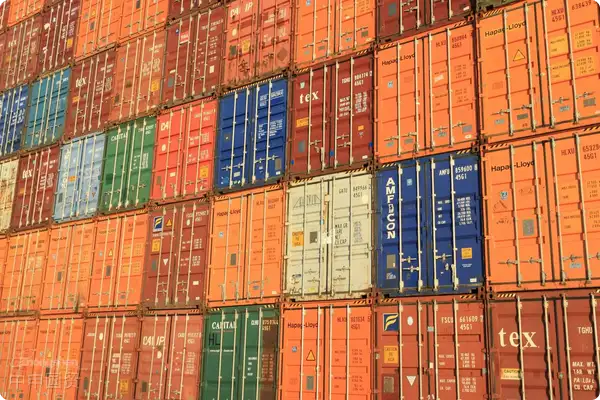
 PSB Record: Shanghai No.31011502009912
PSB Record: Shanghai No.31011502009912 
